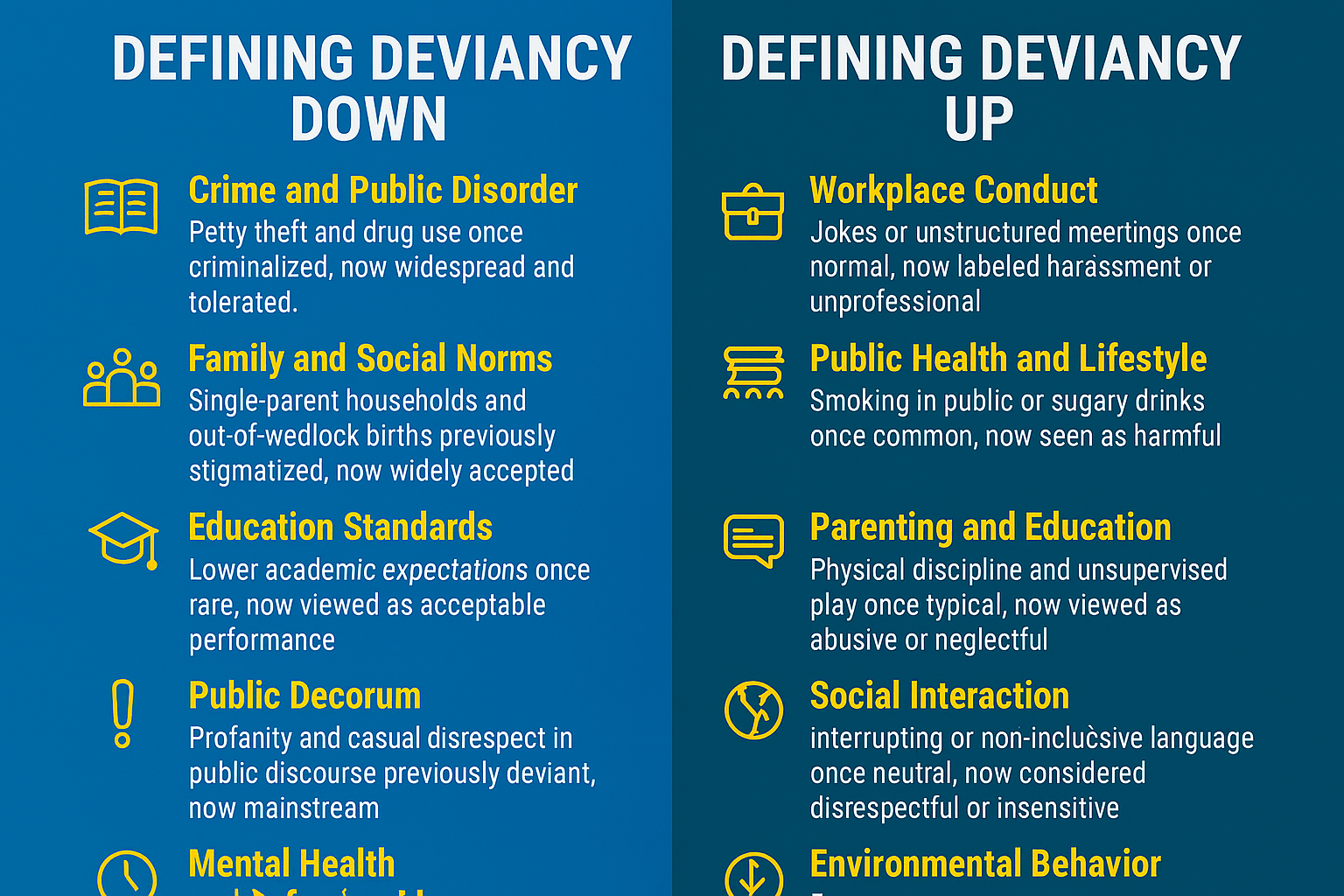1. Crime and Public Disorder
- Petty Theft and Shoplifting
In some cities, enforcement thresholds have been raised (e.g., theft under a specific dollar amount often not prosecuted), making minor thefts more socially tolerated. - Drug Use
Recreational drug use, once stigmatized and criminalized, has become normalized in many places through legalization or decriminalization.
2. Family and Social Norms
- Single-Parent Households
Once considered a social failure, single-parent families are now widely accepted as a typical family structure. - Out-of-Wedlock Births
Historically stigmatized, it is now common and socially normalized in many cultures.
3. Education Standards
- Lower Academic Expectations
Passing students with minimal achievement or reducing rigor to avoid stress has become more common, redefining what counts as “acceptable performance.”
4. Public Decorum
- Language and Behavior
Profanity and casual disrespect in public discourse—once considered deviant—are now mainstream in media and politics. - Dress Codes
Standards for professional or public attire have relaxed significantly, redefining what is considered appropriate.
5. Mental Health and Behavioral Issues
- Chronic Truancy or Absenteeism
Previously treated as serious misconduct, now often excused or normalized under the banner of “mental health” without accountability.
These shifts often occur because enforcement becomes impractical, cultural attitudes change, or policy adapts to widespread behavior.
Here are some strong examples of defining deviancy up—where behaviors once considered normal or acceptable are now labeled as deviant or problematic:
6. Workplace Conduct
- Casual Jokes or Comments
Informal humor that was once tolerated is now often classified as harassment or creating a hostile work environment. - Unstructured Meetings
Previously seen as flexible, now criticized as inefficient or unprofessional.
7. Public Health and Lifestyle
- Smoking in Public
Once common and socially acceptable, it is now widely banned and stigmatized. - Sugary Drinks and Junk Food
Increasingly framed as harmful behaviors contributing to obesity and chronic disease.
8. Parenting and Education
- Physical Discipline
Spanking, once considered regular parental discipline, is now often viewed as abuse. - Unsupervised Play
Allowing children to roam freely, once the norm, is now seen as neglectful.
9. Social Interaction
- Interrupting or Talking Over Others
Previously considered assertive, now labeled as disrespectful or microaggressive. - Lack of Inclusive Language
Words or phrases once considered neutral are now flagged as insensitive or exclusionary.
10. Environmental Behavior
- Single-Use Plastics
Formerly standard, now treated as environmentally irresponsible. - Driving Gas-Powered Cars
Increasingly criticized as contributing to climate harm.
These shifts often reflect cultural evolution, heightened awareness of harm, and advocacy movements. They can improve protections, but also create new social tensions.
